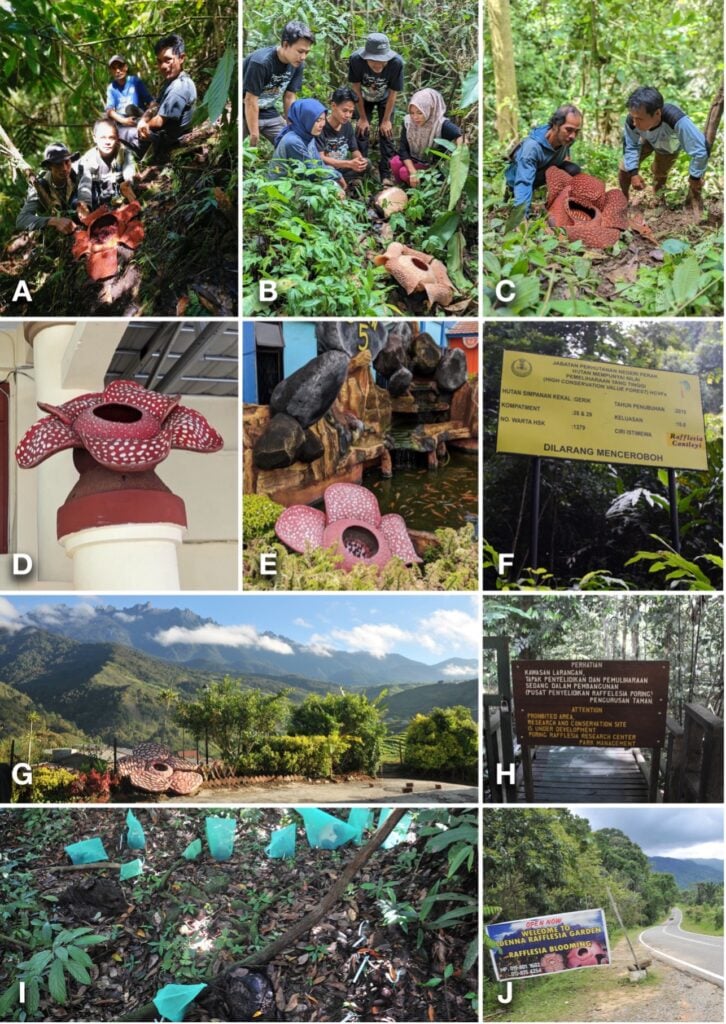A majority of world’s largest flowers teeter on the edge of extinction
18 Jan 2024

The genus Rafflesia, which includes the world’s largest flowers, has aroused curiosity among scientists for centuries and features prominently in local culture across Southeast Asia. The plant has long been used in ethnobotanical medicine and, more recently, as a source of revenue from ecotourism. But despite its acclaim, Rafflesia remains poorly understood in many respects. Taxonomy is disputed, new species are described each year, and the plant has proven recalcitrant to cultivation. This has hindered conservation, and most of the 42 known species are now severely threatened, yet only one is listed by the International Union for Conservation of Nature (IUCN). It is estimated that 60% of Rafflesia species face a severe risk of extinction (equivalent to Critically Endangered [CR]). Moreover, it is predicted that at least 67% of known habitats fall outside protected areas, exacerbating their vulnerability. Alarmingly, recent observations suggest taxa are still being eradicated before they are even known to science. The researchers present recent scientific discoveries and probable extinctions and highlight case studies of conservation success, with a focus on the role of local people. They propose a multi- pronged conservation approach combining strengthened taxonomy, ex situ propagation, ecotourism, and an extension of protected areas. The authors suggest action devolved to local communities and awareness campaigns linked to social media networks will be crucial outside of protected jurisdictions. Finally, they propose to establish Rafflesia as a new icon for plant conservation in the Asian tropics. A combined approach might just save some of the world’s most remarkable flowers, most of which are now on the brink of being lost.
Significance
The paper emphasizes the critical need for urgent conservation measures to safeguard the world’s largest flowers, the Rafflesia genus, as the majority of its 42 known species teeter on the brink of extinction. With the Philippines as the center of Rafflesia diversity, hosting 15 known species, it serves as an important area for future research focus. The study highlights the need for a holistic conservation approach, encompassing habitat preservation and the empowerment of local community action groups, while advocating for Rafflesia as a potential emblem for conservation endeavors in the Asian tropics. Furthermore, the paper provides essential data on the provisional conservation status of all species, including factors like geographic range (e.g., EOO and AOO), which should serve as crucial input for the IUCN Red List of Threatened Species, rectifying the current underrepresentation of Rafflesiaceae. In essence, the paper sheds light on the precarious plight of Rafflesia species, urging immediate action for their protection and underscoring the significance of habitat preservation, community engagement, and the recognition of Rafflesia as a symbol of conservation. Its findings have the potential to significantly enrich ongoing conservation efforts and offer invaluable insights for the IUCN Red List.
Read the full paper: https://nph.onlinelibrary.wiley.com/doi/full/10.1002/ppp3.10431
